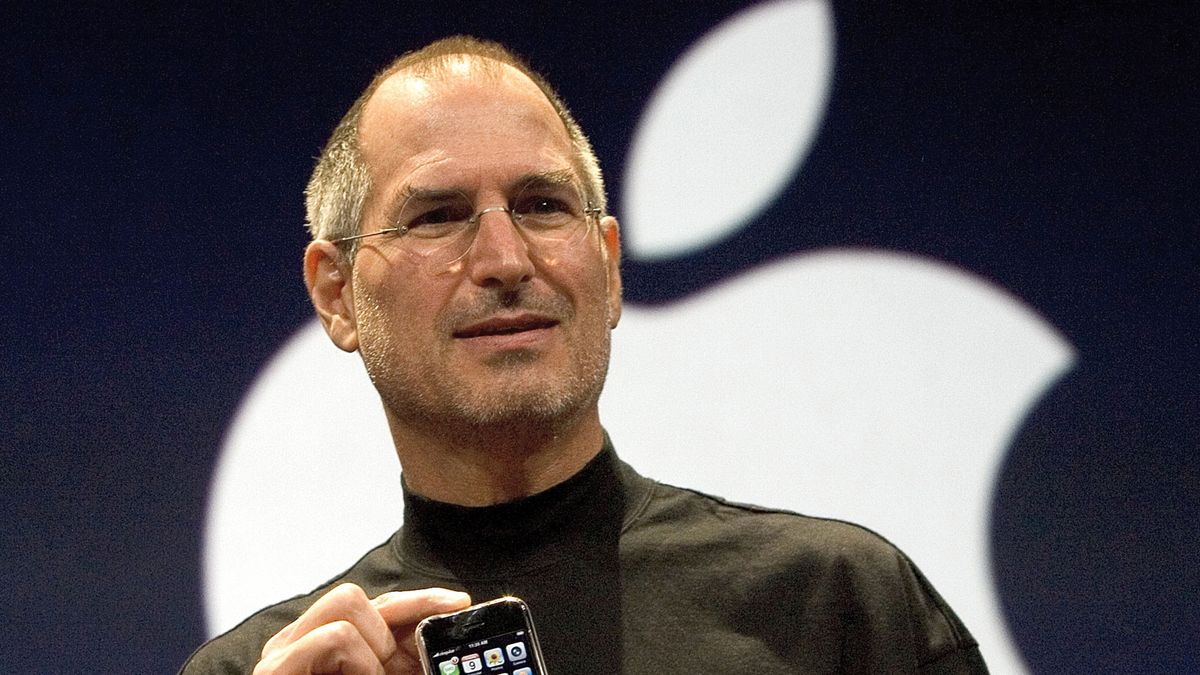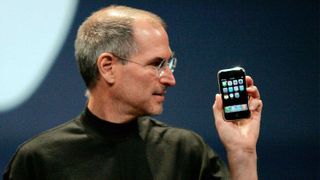5 things Steve Jobs did that Apple would never do today
How different is Apple today to when Steve Jobs was CEO? You might be surprised.

Few company CEOs have inspired such strong reactions – both positive and negative – as Apple’s former leader Steve Jobs. His leadership tenure was markedly different from the company under current CEO Tim Cook, and there are things he did that it’s unimaginable for Cook to do today.
Jobs was no saint, and he made plenty of mistakes during his time. But at the same time, Apple has changed a lot since his death, and even his positive contributions might not work today. So, what exactly did he do that was so different to Apple today? Scroll down to find out.
If you want to further delve into Apple's impact on design, check out our pick of the best Apple products of all time. Looking to buy Apple? See our roundup of the best Apple back to school 2022 deals right now.
01. The product quadrant

When Steve Jobs returned to Apple in the late 1990s, the company was a total mess and on the verge of bankruptcy. It didn’t seem to know what kind of company it wanted to be, throwing out ideas left and right and hoping a few of them would stick. When reestablished, his approach was brutal.
He cut everything that he didn’t deem core to the business. Out was the experimental Newton MessagePad, the failing Pippin games console, and the scattershot approach to making Macs and allowing other firms to clone them. Instead, he forced Apple to focus on a now-famous quadrant of products: Desktops and notebooks for consumers and professionals. A matrix of four products that helped narrow down the confusing options for customers.
Now, Apple’s Mac strategy is getting more bloated every year. Right now, there’s the MacBook Air, MacBook Pro (in three different sizes), iMac, Mac Pro, Mac Mini, Mac Studio, and even more Macs rumoured to be in the pipeline. Apple’s strategy now is radically different from what Steve Jobs set down, and it’s hard to see the company ever returning to the quadrant. Its horizons have broadened and it’s trying to capture more users than ever – but it’s left behind the quadrant’s simplicity.
02. Rival computer projects
Things weren’t always so simple under Steve Jobs’ tenure, though. Back in the 1980s, there were two competing computer projects underway at the company: The Lisa and the Macintosh. The Lisa was envisioned as pushing the envelope of what was possible at the time, and was stacked with advanced tech that had a lasting legacy on the industry. But at $9,995 (around $30,000 today), it was incredibly expensive and sold poorly.
Get the Creative Bloq Newsletter
Daily design news, reviews, how-tos and more, as picked by the editors.
At the same time, Apple was working on the Macintosh, a much more affordable (and less ambitious) alternative. Jobs originally worked on the Lisa (it was named for his daughter), but after he was pushed off the project by the Apple board, he moved over to the Macintosh.
These days, it’s hard to see Apple developing two competing computers at the same time like this. Sure, it sells two different laptops – the MacBook Air and the MacBook Pro – but the internal rivalries that characterised the Lisa-Macintosh years are not evident anymore (at least, so it seems).
03. Masterful “Stevenotes”

When it came time to move a product from development to public reveal, few company CEOs mastered the announcement keynote like Steve Jobs. He was so effective that his ability came to be known as the “reality distortion field”, while the speeches themselves were colloquially called “Stevenotes”.
Key to Jobs’ talks was his touch of flair. From pulling the first MacBook Air from a tiny manilla envelope to convincing Phil Schiller to jump from a 20-foot ladder to demonstrate the iBook’s Wi-Fi capabilities, Jobs knew how to entertain. He could also bring things back down to earth, as when he demoed the original iPad while sitting cross-legged on a sofa in 2010.
Apple’s keynote events these days are a far cry from the days of Steve Jobs. Everything is far slicker and more bombastic, something that’s expanded even further in the age of online-only keynotes and the increased flexibility they afford. The closest Apple has come to a Jobs-esque flair moment since his death is Tim Cook’s “one more thing” revelation of the Apple Watch, and even that was a nod to Jobs’ famous phrase.
04. The iTunes phone
Speaking of product launches, Jobs didn’t always get it right. In 2005, Apple announced the fruits of a partnership with Motorola – the ROKR E1 phone. Informally dubbed the “iTunes phone”, the ROKR E1 was unpopular almost from the word go.
Users could only load 100 songs onto it at a time – a far cry from the iPod’s purported “1,000 songs in your pocket” – and it took an age to transfer them from a computer due to the phone’s crushingly slow ports. To make matters worse, Apple launched the iPod Nano on the same day, undercutting the ROKR E1’s appeal.
Even more puzzling, Apple was already secretly working on the first iPhone by this point. Why collaborate with a future rival on a subpar device when you know you could have something far superior in the works, thereby risking your company’s phone reputation before it’s even had a chance to grow? It was a strange decision from Jobs that we can’t see Apple repeating.
05. An ill-conceived partnership
The Motorola ROKR E1 was not the only curious collaboration launched by Jobs that would never happen today. In 2004, a year before the ROKR E1, Apple launched the iPod+HP. It was, you won’t be surprised to learn, an HP-branded iPod licensed by Apple.
Apple is a company that loves control, whether that’s how its products are marketed or how they are repaired. With the iPod+HP, it had neither. Genius Bars couldn’t fix broken iPod+HP devices because they were officially HP products, and if Apple fans had qualms about HP, then Apple would feel the negative effects.
Apple has learned from that ill-fated experiment and now partners with companies in a much more limited way. The Apple Watch is a prime example, with editions made with Nike and Hermès, yet Apple has far more control here than it ever did with the iPod+HP. Apple may have relaxed its vice-like grip on control only occasionally under Jobs, but it likely won’t happen again under Cook.
Related articles:

Thank you for reading 5 articles this month* Join now for unlimited access
Enjoy your first month for just £1 / $1 / €1
*Read 5 free articles per month without a subscription

Join now for unlimited access
Try first month for just £1 / $1 / €1

Alex Blake is a freelance tech journalist who writes for Creative Bloq, TechRadar, Digital Trends, and others. Before going freelance he was commissioning editor at MacFormat magazine, focusing on the world of Apple products. His interests include web design, typography, and video games.